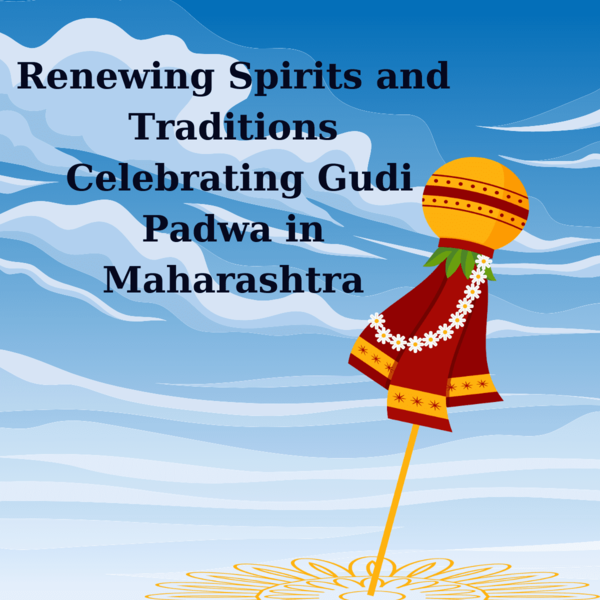Renewing Spirits and Traditions:
Celebrating Gudi Padwa in Maharashtra


Gudi Padwa, celebrated in the state of Maharashtra, India, marks the advent according to the lunisolar Hindu calendar. It falls on the first day of the Chaitra month, bringing a wave of festivity, cultural richness, and tradition. This festival is not only a reflection of Maharashtra’s deep-rooted cultural heritage but also a symbol of auspicious beginnings, prosperity, and happiness. Let’s delve into why Gudi Padwa holds such significance in Maharashtra and how it’s celebrated
The Significance of Gudi Padwa
Historical and Mythological Roots
Gudi Padwa has both historical and mythological significance. It is believed to be the day when Lord Brahma created the universe. For many, it marks the start of Satya Yuga, the age of truth and righteousness. Additionally, it commemorates the victories of the Maratha forces led by Chhatrapati Shivaji Maharaj, making it a symbol of Maratha pride and valor.
Agricultural Significance
Coinciding with the end of one harvest and the beginning of another, Gudi Padwa is closely tied to the agricultural cycle. It is a time of thanksgiving to Mother Nature for the bountiful harvest and prayers for good crops in the year ahead. This link to agriculture highlights the festival’s deep connection to the earth and its cycles.
Celebrations and Traditions
The Gudi
The centerpiece of the celebration is the Gudi, a ceremonial flag hoisted by families outside their homes. It consists of a bright cloth adorned with brocade or silk tied to the tip of a long bamboo. Over this, neem leaves, a garland of sugar crystals, and a twig of mango leaves are tied, and an inverted silver or copper pot is placed atop the bamboo. The Gudi symbolizes victory, prosperity, and health. It is believed to ward off evil and invite positive energy and good luck into the house.
Rituals and Customs
The day begins with an extensive cleaning of the house, signifying a fresh start. People take a special bath with oil and ubtan, a traditional scrub, as a purification ritual. Wearing new clothes, especially in vibrant colors, is another important part of the celebration, reflecting the spirit of renewal.
Culinary Delights
Gudi Padwa is also a time for gastronomical delights. Families prepare and enjoy a feast of traditional dishes. The most notable is the ‘Puran Poli,’ a sweet flatbread, and the ‘Shrikhand,’ a sweet dish made from strained yogurt. Sprouts and neem leaves are also consumed on this day, symbolizing the balance of sweet and bitter experiences in life.
Cultural Events
Cultural processions, vibrant rallies, and traditional performances mark the celebration in many communities. Folk dances, music, and the display of martial arts, particularly by the youth, add fervor to the festivities.
Gudi Padwa is much more than just a New Year’s celebration; it’s a festival steeped in history, mythology, and the agricultural cycle. It reflects the Maharashtrian ethos of valor, prosperity, and community spirit. As families hoist the Gudi, prepare special meals, and don new clothes, they reaffirm the age-old traditions and welcome the new year with hope, joy, and festivity. Through its vibrant customs and rituals, Gudi Padwa strengthens the social fabric, bringing communities closer and reaffirming the importance of nature, health, and well-being in our lives.
Image credit:
Pichvai art https://in.pinterest.com/pin/5418462045178821/ .
